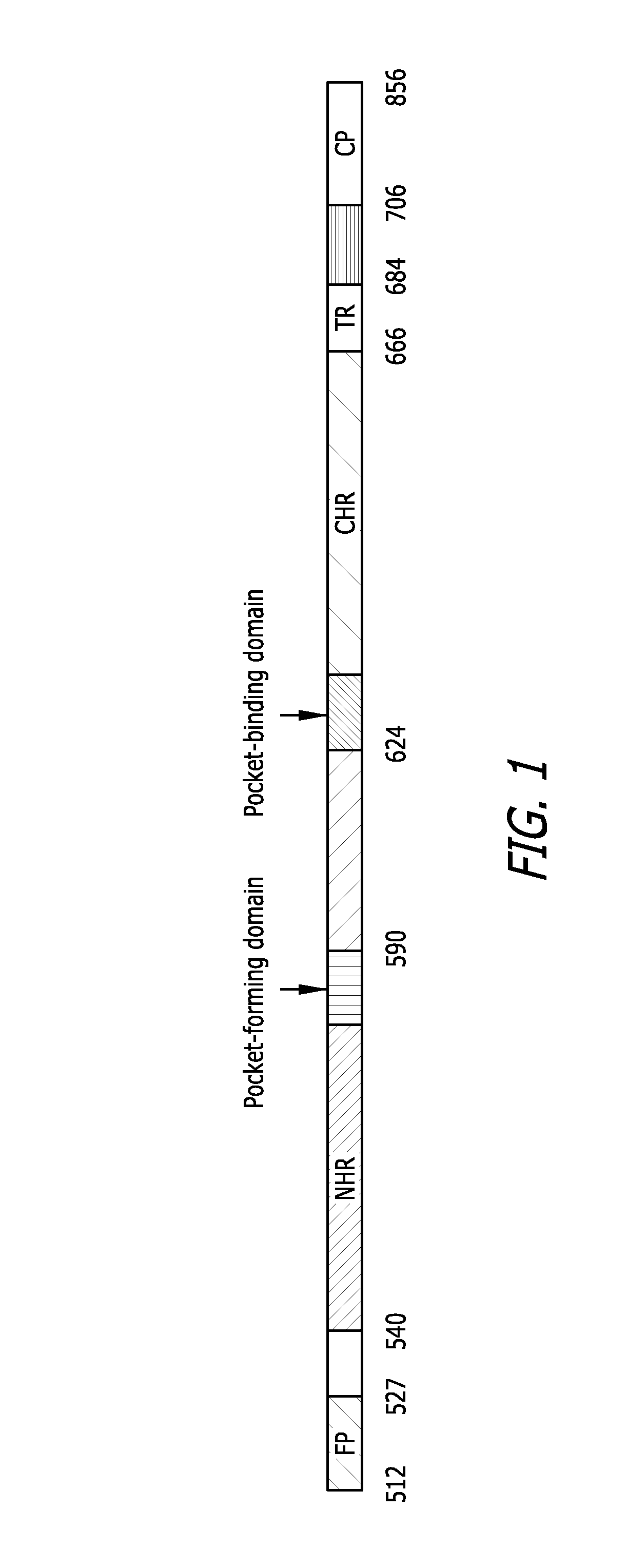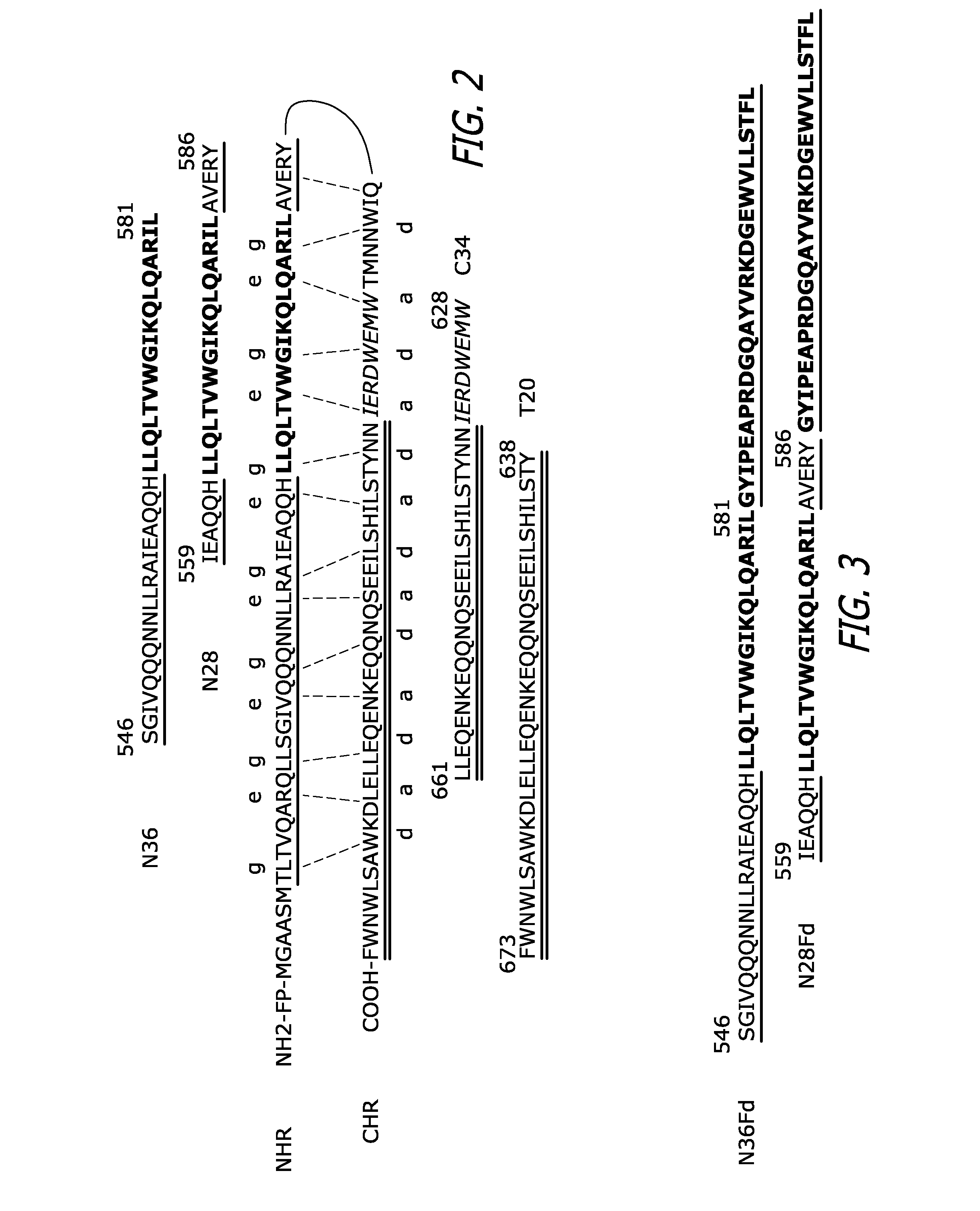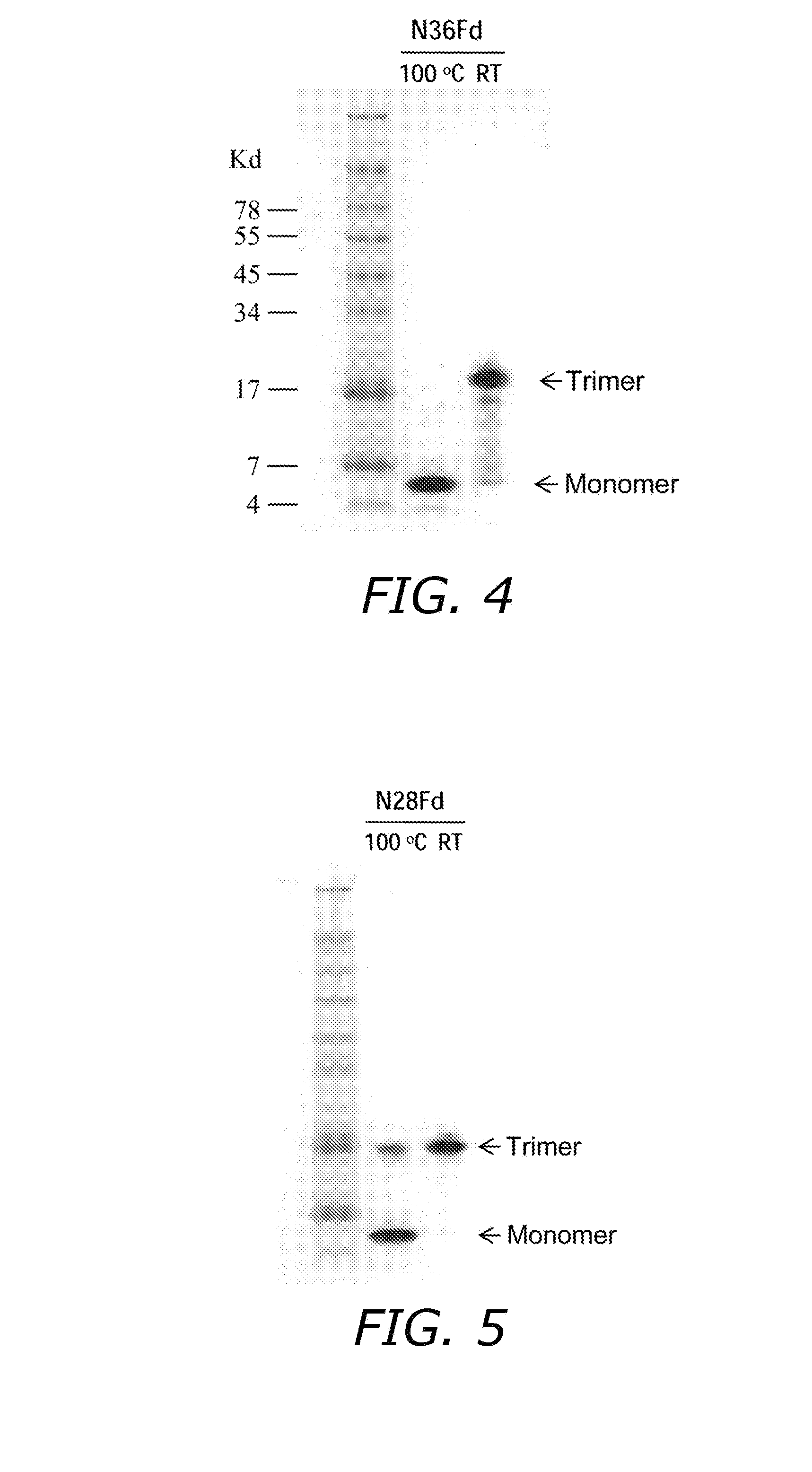Trimeric HIV fusion inhibitors for treating or preventing HIV infection
a technology of fusion inhibitors and hiv, which is applied in the direction of drug compositions, peptide sources, peptide/protein ingredients, etc., can solve the problems of inability to respond to current rtis and pis, limited clinical use of t20, and inability to effectively treat hiv/aids patients, so as to prevent infection of subjects
- Summary
- Abstract
- Description
- Claims
- Application Information
AI Technical Summary
Benefits of technology
Problems solved by technology
Method used
Image
Examples
example 1
Design of N36Fd and N28Fd Trimers
[0083]N-peptides derived from the HIV-1 gp41 NHR are commonly regarded as weak HIV-1 fusion inhibitors because free N-peptides have a tendency to aggregate and thus cannot fold into a stable trimeric α-helical conformation in physiological solution. The 27-mer Fd sequence (SEQ ID NO: 29) was used to facilitate the trimerization of the N-peptides N36 and N28 by fusing the Fd sequence directly to the C-terminus of N36 (SEQ ID NO: 30) or N28 (SEQ ID NO: 31) without any linking sequence (FIG. 3). N36 was chosen for this study because of its ability to form highly stable 6-HB with peptides derived from gp41 CHR. This peptide includes a 17-amino acid sequence that provides a critical hydrophobic pocket for the interaction between gp41 NHR and CHR (FIG. 2, in bold). The N28 peptide was selected because of an AVERY (aa 582-586) sequence adjacent to the C-terminus of the pocket-formation sequence which may be important for gp41 6-HB formation. Specifically, t...
example 2
Expression, Purification and Characterization of N36Fd and N28Fd
[0084]The DNA fragments of N36 and N28 were amplified by PCR using the Platinum PCR SuperMix High Fidelity kit (Invitrogen, Carlsbad, Calif.) from a pHBX-env / wt plasmid with a forward primer containing a BamH1 site and a reverse primer that had no restriction site. The fragment of Fd was produced by annealing a long synthetic forward primer coding the last 9 amino acids of the N-peptide (N36 or N28) and the Fd with its complement, a long reverse primer with an Xhol1 site. Then the two overlapping fragments were mixed and used as templates for another PCR reaction using the BamH1 forward primer and a shorter reverse primer coding the last few amino acids of the Fd with an Xhol1 site. The product was purified using a gel extraction kit (QIAGEN, Valencia, Calif.), digested with BamH1 and Xhol1 enzymes (TaKaRa Bio, Madison, Wis.), and cloned into a pGEX6p-1 vector (QIAGEN). The sequence was confirmed by DNA sequencing.
[0085...
example 3
N36Fd and N28Fd are in a Stable Alpha-Helical Conformation
[0087]The secondary conformational structure of N36, N36Fd, N28, N28Fd and Fd peptides was analyzed by circular dichroism (CD) spectroscopy as previously described. All the N-peptides were diluted in ddH2O (pH 7.0) and all the C-peptides or the mixture of the N- and C-peptides were diluted in 50 mM sodium phosphate and 150 mM NaCl (PBS, pH 7.2) to a final concentration of 10 μM. The individual peptides and their mixtures were incubated in a 37° C. water bath for 0.5 h before testing. The spectra of each sample were acquired on Jasco spectropolarimeter (Model J-715, Jasco Inc., Japan) at RT, using a 5.0 nm bandwidth, 0.1 nm resolution, 0.1 cm path length, 4.0 sec response time, and a 50 nm / min scanning speed, and were corrected by a subtraction of the background corresponding to the solvent. The spectrum of the N-peptide portion in the individual N36Fd or N28Fd, or in the N36Fd / C34 or N28Fd / C34 mixture, was calculated by subtr...
PUM
| Property | Measurement | Unit |
|---|---|---|
| Molar density | aaaaa | aaaaa |
| Molar density | aaaaa | aaaaa |
| Molar density | aaaaa | aaaaa |
Abstract
Description
Claims
Application Information
 Login to View More
Login to View More - R&D
- Intellectual Property
- Life Sciences
- Materials
- Tech Scout
- Unparalleled Data Quality
- Higher Quality Content
- 60% Fewer Hallucinations
Browse by: Latest US Patents, China's latest patents, Technical Efficacy Thesaurus, Application Domain, Technology Topic, Popular Technical Reports.
© 2025 PatSnap. All rights reserved.Legal|Privacy policy|Modern Slavery Act Transparency Statement|Sitemap|About US| Contact US: help@patsnap.com



